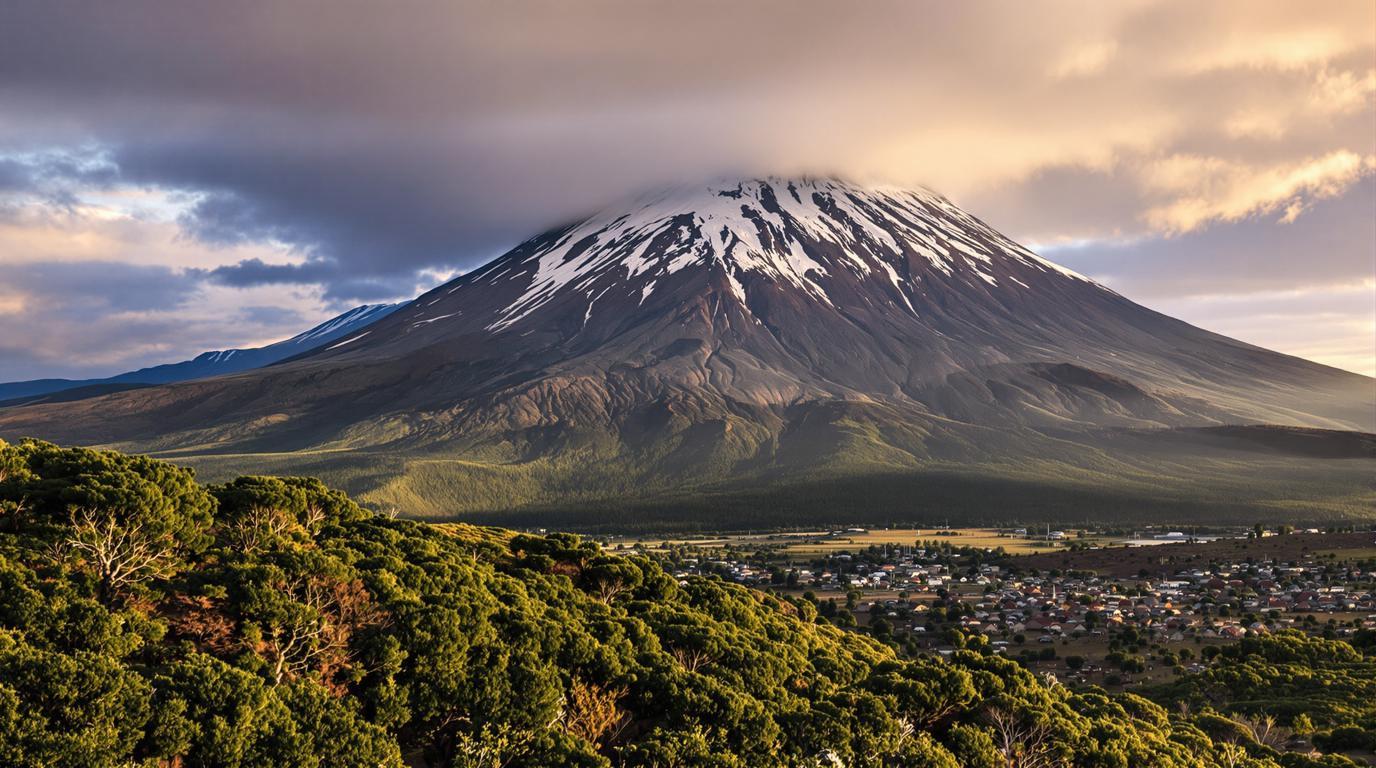Hidden in the heart of East Africa stands a majestic giant that beckons adventurers from around the world. Mount Kilimanjaro isn’t just Africa’s highest peak – it’s a journey through five distinct ecosystems and a test of human determination that transforms ordinary travelers into accomplished mountaineers.
Africa’s rooftop: The sleeping giant that awes climbers worldwide
Rising dramatically to 19,341 feet (5,895 meters), Kilimanjaro stands as the world’s highest free-standing mountain. Unlike other major peaks, this dormant volcano requires no technical climbing skills – just determination and proper acclimatization. This accessibility has made it a bucket-list adventure for thousands annually seeking to conquer its snow-capped summit.
“Standing on Uhuru Peak at sunrise, watching shadows stretch across Tanzania while the curvature of Earth reveals itself – that moment changes something fundamental in everyone who experiences it,” says Joseph Mfinanga, a veteran guide with over 200 summits.
Seven paths to the summit: Choosing your perfect route
The mountain offers seven distinct climbing routes, each with unique advantages. The Marangu Route (nicknamed “Coca-Cola Route”) provides hut accommodations and takes 5-6 days, while the scenic Machame Route (“Whiskey Route”) offers camping and stunning views over 6-7 days. For serious adventurers, the 8-9 day Lemosho Route boasts the highest success rate at nearly 90% thanks to its gradual acclimatization profile.
Conquering the “mountain of greatness” requires strategic timing
Success on Kilimanjaro depends heavily on timing. The ideal climbing windows fall during Tanzania’s dry seasons: January-March and June-October. These periods offer clearer summit views and reduced rainfall, though January-February typically provides the warmest conditions. Much like Kyoto’s Golden Temple, Kilimanjaro reveals its most spectacular face during specific hours – summit attempts begin around midnight to reach the peak at sunrise.
Five ecosystems in five days: Nature’s vertical showcase
What makes Kilimanjaro truly unique is the journey through five distinct climate zones. Climbers begin in lush rainforest teeming with monkeys and exotic birds, traverse heath and moorland dotted with giant groundsels, navigate alpine desert reminiscent of Mars, and finally reach the arctic summit zone with its rapidly retreating glaciers. This biodiversity rivals even Africa’s most diverse lakes.
The spectacular Barranco Wall: The mountain’s hidden thrill
Among Kilimanjaro’s most exhilarating features is the Barranco Wall – a steep 800-foot rock face that appears impossibly intimidating from below. Known locally as the “Breakfast Wall” (climbed after morning meals), it requires no technical climbing but offers thrilling exposure and breathtaking views. The giant senecio trees dotting this area create landscapes as otherworldly as Easter Island’s mysterious giants.
The disappearing ice cap: Climb while you still can
Kilimanjaro’s iconic ice fields are vanishing at an alarming rate. Scientists predict the mountain’s glaciers could disappear completely within decades. These ancient ice formations, some dating back 11,000 years, have shrunk by over 80% since 1912. Unlike carbon-negative Bhutan, Tanzania faces significant climate challenges despite minimal contributions to global emissions.
“Every year, we watch the ice retreat further,” explains climate researcher Dr. Helena Mwakalo. “The mountain is a visible barometer for climate change in East Africa.”
Beyond the summit: Kilimanjaro’s cultural tapestry
The mountain isn’t merely a physical challenge – it’s steeped in cultural significance. The local Chagga people consider it sacred, with legends telling how the god Ruwa gifted fire to humanity from the peak. Towns like Moshi offer vibrant markets and authentic Tanzanian cuisine worth exploring before or after your climb, reminiscent of the cultural richness surrounding Turkey’s Pamukkale terraces.
Whether you’re seeking physical challenge, natural wonder, or spiritual awakening, Kilimanjaro delivers in a way few destinations can. As the saying goes among successful climbers: “The mountain changes you.” Perhaps that’s why so many return, drawn back to Africa’s magnificent rooftop and the perspective that can only be gained by standing above the clouds.
